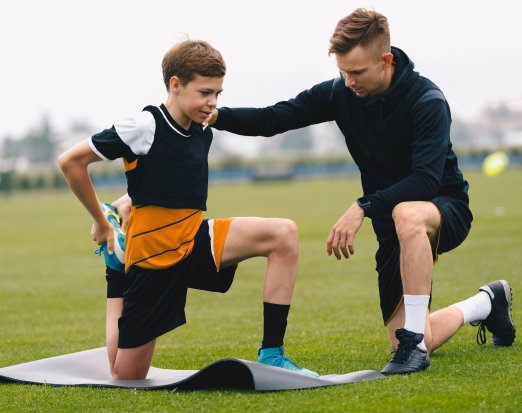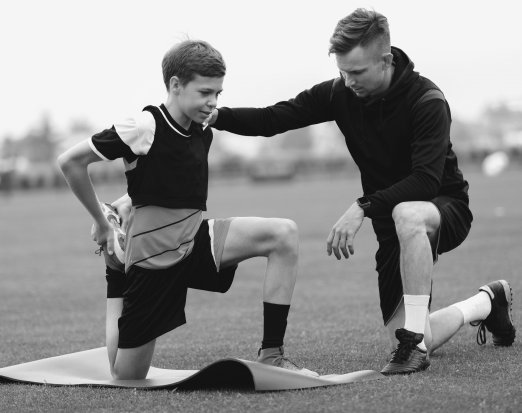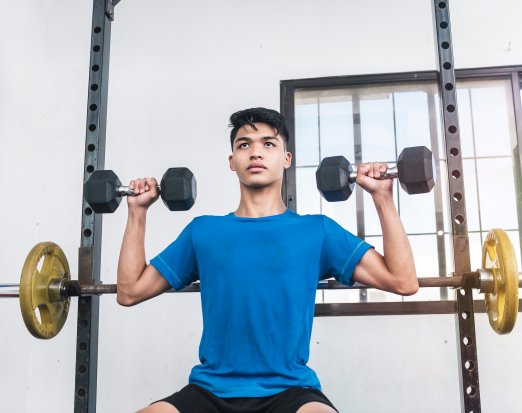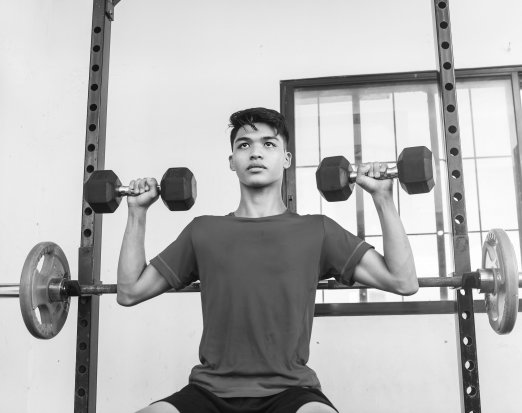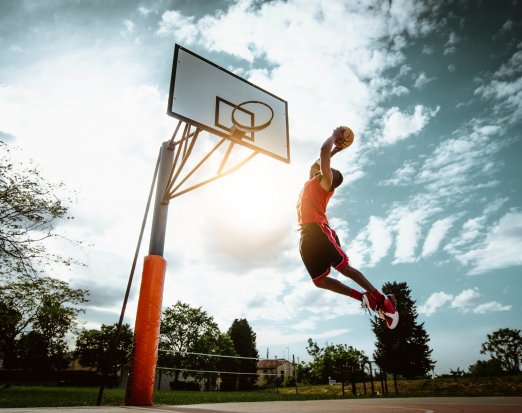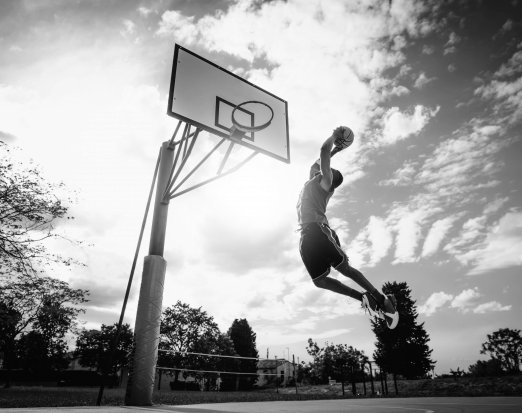Improving Strength Might be the Key to Developing Power
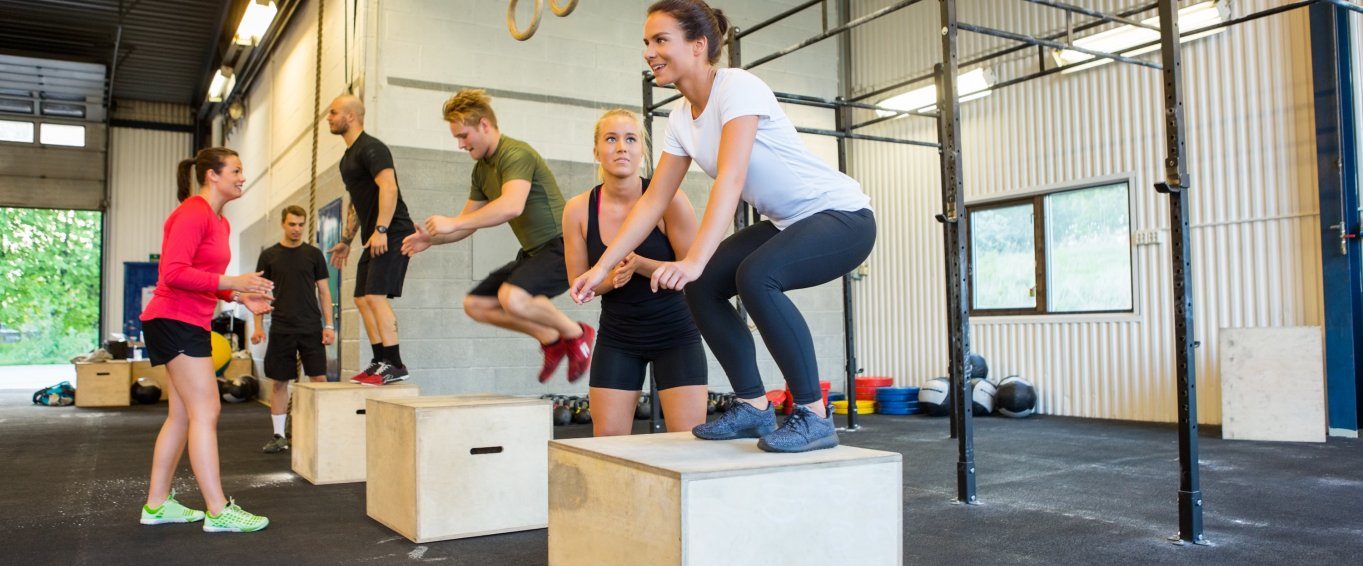
That athlete or player is extremely powerful. They are explosive or have explosive qualities. These are some of the common statements we hear from commentators or even ex-professionals, when describing other athletes or players from football, rugby, or tennis. This, therefore, would suggest that power or explosiveness is an athletic ability, and an important ability for sporting performances. But what is power?
From a mechanical definition power is frequently expressed through the equation – Power = force x velocity. This equation has led to researchers and coaches using the term - explosive strength (strength and speed). Power can also be expressed using the calculation work divided by time, where work is calculated from the force x displacement.
What does this all mean? Let’s take a practical example. An athlete is performing squats. The athlete is lifting 90kg and moving the barbell (positive work) ~0.5m in each repetition. Therefore, the work completed per repetition is the force (strength) x displacement (barbell travelled). This would equal ~441 Joules per repetition.
To calculate power, time needs to be considered, as power is the rate of doing work (normally per second). So, if we revisit the athlete preforming squats, and also measure the time (seconds) per repetition, we can calculate their power output. For example, 90kg barbell squat, moving the barbell ~0.5m, with each repetition (positive work) taking ~2 seconds. Power = 441 Joules / 2 seconds = 220.5 Watts.
Let’s now compare two athletes. Both athletes are still performing barbell squats, and lifting the same load 90kg, around the same displacement ~0.5m. Therefore, the work completed by each athlete would be comparable (441 Joules). However, the first athlete completes each repetition in 2 seconds, where the second athlete takes 1.5 seconds. By calculating their power, the second athlete would have a higher power output.
First Athlete - barbell squat 90kg (0.5m) = 441 Joules /2 seconds = 220.5 Watts
Second Athlete - barbell squat 90kg (0.5m) = 441 Joules /1.5 seconds = 294 Watts
As you can see in the above example, power is the expression of the rate of doing work per second. The second athlete can complete the same amount of work in a shorter time, and therefore more powerful. As coaches generally want their athletes to complete work (movement) as quickly as possible, power seems to be an important quality. So, is power a trainable quality? And if so, how do we train for power?
The Strength and Power Connection
If we quickly review the power calculations again, force x velocity, and work divided by time, remember that work is force x displacement, we can see that force or strength is an important factor in power development. To understand this a little more, we can visualise this on a force – time graph. Again, comparing two athletes, we can see that athlete A is stronger than athlete B, as athlete A can produce more force (peak force). However, athlete B can produce a greater amount of force in a shorter time. This is an extremely important factor, as most sporting movements are completed in a relatively short time – under 300ms (13). Thus, as time is limited within most sporting movements, force (strength training) development is the quality that can make the most difference in power outputs, including in youth athletes (2, 6).

Rate of Force Development
As time is usually restricted in most sporting movements, the rate of force development – the change of force divided by the change in time will be a consideration in the athlete’s force-time characteristics. Additionally, as the athlete’s force-time characteristics can be calculated as impulse (area under the curve), a change in rate of force development and impulse, will have a net effect on the athlete’s velocity – a change in velocity (if the mass stays constant, which it normally does it most sporting movements). So, by improving the athlete’s strength, and focusing on the intent to move the load as quickly as possible (7), the athlete will alter their rate of force development and impulse, which in tun will change the athlete’s velocity and performance – this has been reported in jumping (9), acceleration (8), and agility (11).
In a previous blog, we discussed the different training modes that can affect the rate of force development, from heavy strength training (12), isometric training (3), and sensorimotor (balance training) (5). Using this information within a long-term athlete development programme, the athlete’s training can be structured in a way to develop different qualities that will help the next phase of their development. For example, with new young athletes - a focus on skill development in their lifts will help with general strength and motor skills, especially balance and coordination (other training can be used for variation and general skill development).
As the young athletes develops and matures, their focus will be on relative strength, remember that relative strength in the maximal strength level relative to the athlete’s bodyweight. Through regular strength training, the athlete can push their relative strength beyond >1.6x bodyweight, as this serves as a great foundation for further rate of force development changes, and general robustness (coping with high forces in their next training).
Training at Different Velocities - Dynamic versus Ballistic
As the rate of force development and impulse are directly related to the athlete’s change in velocity, the exercise selection is an important factor. It is suggested that exercises should be considered on a spectrum from dynamic to ballistic. Dynamic training is simply moving through a certain range of motion. However, the velocity in a dynamic exercise will change relative to the load. For example, a squat can be performed with light, moderate, and heavy loads. Performing the squat will lighter loads, the athlete will spend a good portion of the concentric phase actually decelerating the load before coming to the end of the exercise (10). A squat can also be performed ballistically, where the athlete’s body and external load are projected upwards with no focus on slowing down the movement. Example of these exercises are squat jumps, box jumps, and tuck jumps, which fall into the plyometric family and utilise the stretch-shortening mechanism. With ballistic type exercises and drills, ground reaction forces and/or eccentric loading need to be considered along with volume of training.
In both types of training, dynamic and ballistic, if there is an intent to move as quickly as possible (from the initial start of the movement) this will lead to higher rate of force development. For example, in the dynamic movement the intention to move the load (barbell) will lead to a change in rate of force development, but as the mass (barbell) is adding to bodyweight, the actual change in acceleration might be small. So, it is possible to train rate of force development without seeing a change in speed, remember that the rate of force development is the change of force divided by the change in time, not the change in velocity (7). In ballistic movements, the generation of force, again from the onset of movement, will lead to an acceleration of the athlete’s body (mass). In both cases, the intention to move quickly, will lead to changes in the nervous system, including higher central drive, quicker firing rates, and motor unit synchronisation. These are all possible factors to alter the rate of force development (1). Furthermore, the velocity of the movement may have a better transference to sporting movements (4). This may be due to the nervous system organising a specific movement strategy, along with a set series of motor skills, all completed in a set time/at speed.
This is an important consideration for long-term planning, and general athletic development. As there are a range of movements that athletes perform when playing sport, different force-time characteristic- using a range of motor skills, it would be logical to expose athletes to a range of exercise – dynamic and ballistic. By exposing the athletes to a range of exercises (and loads), the athletes can learn to develop force throughout the force-time spectrum but remember that most sporting activities are performed in the first 300 ms. Thus, coaching athletes to exert a high level of force at the start of the movement, will drive mostly nervous system changes that will alter the rate of force development.
Summary
Being powerful or explosive are frequently used to describe athletes; however, power has a clear definition in a mechanical context. Whether, expressing power as force x velocity or work / time, strength (force) is an essential quality and perhaps the most important quality to train. By developing strength in athletes, especially relative strength, this will give a solid foundation to further train the rate of force development (intent) through a range of exercises – dynamic and ballistic. By improving and tracking the athlete's strength level, this will alter their rate of force development and force-time characteristics (impulse), and have a positive effect in the athlete’s sporting performances – acceleration, jumping, and agility.
Youth Strength & Conditioning Platform for Schools, Sport Clubs, and Academies.
Our platform helps to deliver effective training and tracks athletic progress and development, with the core objectives of reducing the risk of injuries and to promote both sport readiness and performance. The platform’s features include -
- Strength and conditioning tests and dashboard to monitor and compare athlete metrics
- Athlete app - athletes can discover new exercises and train independently
- Track data - monitor athlete’s training loads, RPE, and training adherence
- Reports - simply create squad, team, and individual athlete reports
- Full curriculum - follow a strength and conditioning curriculum with a library of session plans
References
- Behm, D.G., & Sale, D.G. (1993). Velocity specificity of resistance training. Sports Medicine, 15(6), 374 – 388.
- Behm, D.G., Young, J.D., Whitten, J.H.D., Reid, J.C., Quigley, P.J., Low, J., Li, Y., Lima, C.D., Hodgson, D.D., Chaouachi, A., Prieske, O., & Granacher, U. (2017). Effectiveness of traditional strength vs power training on muscle strength, power, and speed with youth: A systematic review and meta-analysis. Frontiers in Physiology, 8(423), 1 – 37.
- Burgess, K.E., Connick, M.J., Graham-Smith, P., & Pearson, S.J. (2007). Plyometric vs isometric training influences on tendon properties and muscle output. Journal of Strength & Conditioning Research, 21(3), 986 – 989.
- Cronin, J.B., McNair, P.J., & Marshall, R.N. (2002). Is velocity-specific strength training important in improving functional performance. Journal of Sports Medicine & Physical Fitness, 42(3), 267 – 273.
- Gruber, M., & Gollhofer, A. (2004). Impact of sensorimotor training on the rate of force development and neural activation. European Journal of Applied Physiology, 92, 99 – 105.
- Harries, S.K., Lubans, D.R., & Callister, R. (2012). Resistance training to improve power and sports performance in adolescent athletes: A systematic review and meta-analysis. Journal of Science & Medicine in Sport, 15, 532 – 540.
- Kawamori, N., & Newton, R.U. (2006). Velocity specificity of resistance training: Actual movement velocity versus intention to move explosively. Strength & Conditioning Journal, 28(2), 86 – 91.
- Kawamori, N., Nosaka, K., & Newton, R.U. (2013). Relationships between ground reaction impulse and sprint acceleration performance in team sport athletes. Journal of Strength & Conditioning Research, 27(3), 568 – 573.
- Kirby, T.J., McBride, J.M., Haines, T.L., & Dayne, A.M. (2011). Relative net vertical impulse determines jumping performance. Journal of Applied Biomechanics, 27, 207 – 214.
- Kubo, T., Hirayama, K., Nakamura, N., & Higuchi, M. (2018). Influence of different loads on force-time characteristics during back squat. Journal of Sports Science & Medicine, 17, 617 – 622.
- Spiteri, T., Newton, R.U., Binetti, M., Hart, N.H., Sheppard, J.M., & Nimphius, S. (2015). Mechanical determinants of faster change of direction and agility performance in female basketball athletes. Journal of Strength & Conditioning Research, 29(8), 2205 – 2214.
- Stone, M.H., Sanborn, K., O’Bryant, H.S., Hartman, M., Stone, M.E., Proulx, C., Ward, B., & Hruby, J. (2003). Maximum strength-power-performance relationships in collegiate throwers. Journal of Strength & Conditioning Research, 17(4), 739 – 745.
- Zatsiorsky, V.M. (2003). Biomechanics of strength and strength training. In: strength and power in sport (2nd Edition). Oxford, United Kingdom: Blackwell Science, P. 114 – 133.
